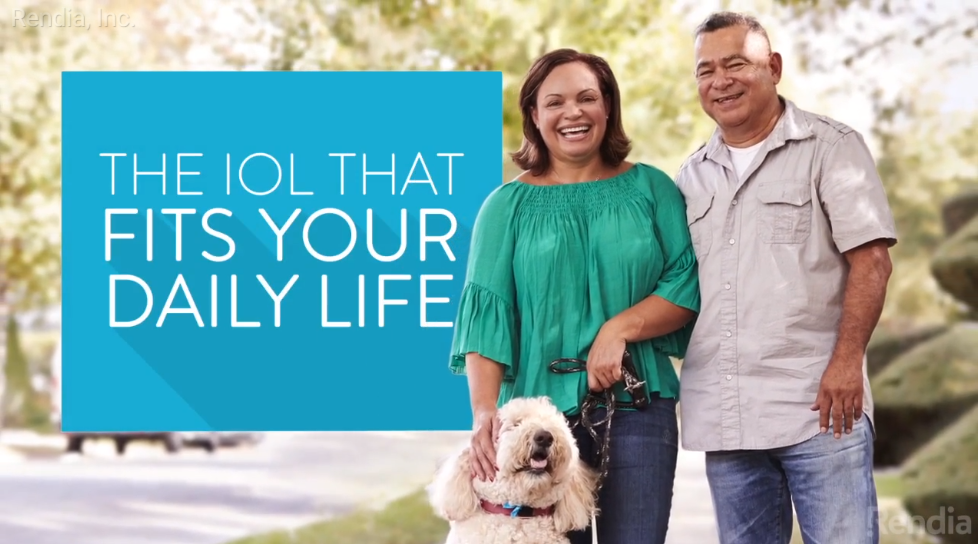Patient perceptions and expectations are changing
Of course it comes as no surprise that the results of a survey published in the journal Clinical Ophthalmology of 1,000 potential and previous cataract-surgery patients concluded that “the ophthalmologist plays an important role in preparing patients for cataract surgery.” What was surprising, however, is that the researchers discovered that what eye doctors think patients should know and what patients really want to know are two different things. Are you talking to your cataract surgery patients about what matters to them?
Patients may have different questions than you assume
Cataract surgery has come a long way in the past couple of decades. Technological advances make modern cataract surgery very different from the procedure of decades past. Many prospective patients already know this, but doctors often suffer from “the curse of knowledge,” forgetting that the average patient doesn’t have the same awareness of the latest techniques, treatments, and technologies. Many hear “surgery” and feel anxiety about pain, cost, and recovery.
In a survey, cataract surgery patients reported that doctors discussed lens options only 39 percent of the time, and 25 percent of post-op patients did not feel they understood their lens and vision options.
The research supports this. Patients in the Clinical Ophthalmology study who had discussed cataract surgery with an eye doctor reported that the benefits of surgery were most often mentioned (68 percent), but lens options were infrequently mentioned (39 percent). Of those who had had surgery, only 75 percent felt they understood their lens and vision options, compared to 85 percent who felt well educated about the overall procedure. This shows room for improvement for ophthalmologists hoping to improve premium conversion rates.
If you’re only focusing on informed consent with your pre-op patients, you’re missing the boat. Same goes if you’re making assumptions about what they want to discuss. For instance, it may well be that patients have fears about the surgery itself, which is common. Or they might be confused about the differences between traditional cataract surgery and laser-assisted cataract surgery. A patient education video can help explain the options.
Since patients may not understand how dry eye symptoms may worsen after cataract surgery, you may want to counsel the patient on pre-operative dry eye treatment, as well.
How to ‘sell’ patients on premium lens options without selling
The cost of surgery may be a hurdle for some patients, who may not initially realize that most insurance plans don’t cover laser cataract surgery. This is where eye doctors need to “sell” patients by highlighting the benefits of premium IOLs without being disingenuous. “Bring the real perspective to patients on the perceived value of what premium means,” said Mitchell A. Jackson, M.D., in a meeting presentation, reported CRS Today. Counsel each patient on the out-of-pocket options available, regardless of what you think they may be interested in spending.
Rendia’s Outcome Simulator was designed for exactly this purpose: to help doctors better communicate the value of advanced IOLs or the side effects of refractive surgery to their patients by showing them what their vision could look like before and after various procedures.
Consider offering different levels of cataract surgery packages. Tailor your recommendations to individual patients’ lifestyles and expectations.
“There is nothing wrong with offering multiple cataract surgery packages, as long as you comply with regulatory guidelines and bill appropriately,” said Dr. Jackson. He offers three packages to his patients—“basic,” “legal to drive,” and “forever young.”
You need to start by asking your patients questions about their lifestyle and expectations. Their responses will drive their decision. “Most of our patients are on the elderly side, and their biggest concern is losing their independence, and driving is independence,” Dr. Jackson said. He explains to his patients that the “legal to drive” package offers a lifetime of distance driving without glasses, whereas “the forever young” package offers a lifetime of improved vision at all distances.
He added, “It is important to explain to the patient that contact lenses or glasses are more costly in the end.”
How to motivate patients to pursue cataract surgery
The Clinical Ophthalmology study found that of those who had had cataract surgery, 81 percent elected to do so on the advice of their health care professional. And three-quarters of post-op respondents reported a higher quality of life and said they wished they had had the surgery sooner—a clear indication that doctors’ current methods of patient education are not effective enough to compel patients to choose surgery.
But here’s the thing: patients won’t seek you out for surgery if they don’t realize how their vision is declining as the cataract worsens, since the progression of their cataract can be very slow. That also means patients might not feel sufficiently motivated to schedule the surgery, because they’re not seeing how it’s gradually affecting their quality of life. Common excuses include, “Cataracts are just a part of aging and there’s nothing you can do about them,” “My vision’s not that bad,” and “Laser surgery is too costly.”
It’s up to you to show patients what is possible for them, and how much better life can be with better vision.
Simulate vision and expected outcomes with Outcome Simulator, Rendia’s interactive surgical consultation tool. Learn more today.

